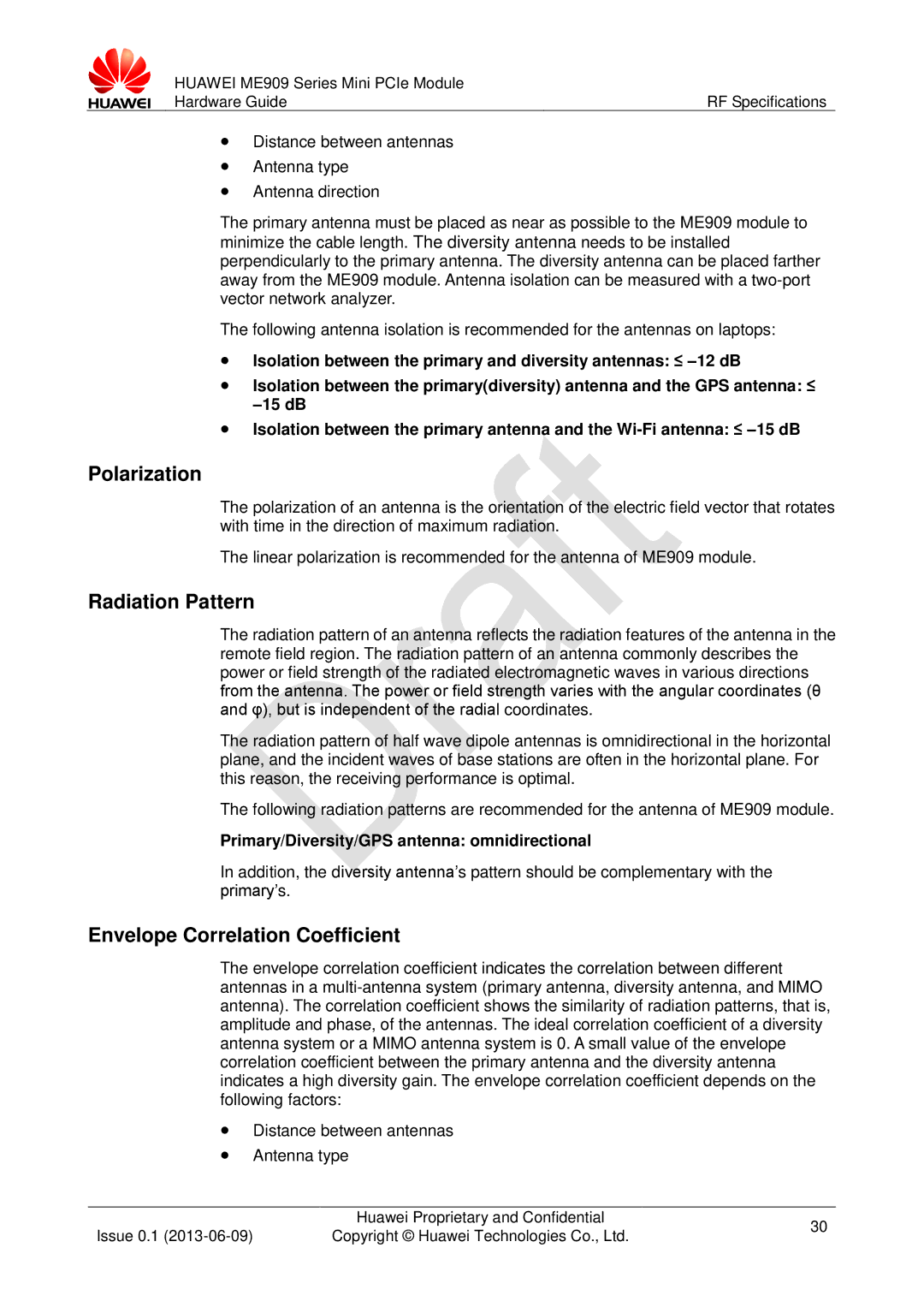
HUAWEI ME909 Series Mini PCIe Module |
|
Hardware Guide | RF Specifications |
Distance between antennas
Antenna type
Antenna direction
The primary antenna must be placed as near as possible to the ME909 module to minimize the cable length. The diversity antenna needs to be installed perpendicularly to the primary antenna. The diversity antenna can be placed farther away from the ME909 module. Antenna isolation can be measured with a
The following antenna isolation is recommended for the antennas on laptops:
Isolation between the primary and diversity antennas: ≤
Isolation between the primary(diversity) antenna and the GPS antenna: ≤
Isolation between the primary antenna and the
Polarization
The polarization of an antenna is the orientation of the electric field vector that rotates with time in the direction of maximum radiation.
The linear polarization is recommended for the antenna of ME909 module.
Radiation Pattern
The radiation pattern of an antenna reflects the radiation features of the antenna in the remote field region. The radiation pattern of an antenna commonly describes the power or field strength of the radiated electromagnetic waves in various directions fromtheantenna.Thepowerorfieldstrengthvarieswiththeangularcoordinates(θ andφ),butisindependentoftheradial coordinates.
The radiation pattern of half wave dipole antennas is omnidirectional in the horizontal plane, and the incident waves of base stations are often in the horizontal plane. For this reason, the receiving performance is optimal.
The following radiation patterns are recommended for the antenna of ME909 module.
Primary/Diversity/GPS antenna: omnidirectional
In addition, the diversityantenna’s pattern should be complementary with the primary’s.
Envelope Correlation Coefficient
The envelope correlation coefficient indicates the correlation between different antennas in a
Distance between antennas
Antenna type
| Huawei Proprietary and Confidential | 30 | |
Issue 0.1 | Copyright © Huawei Technologies Co., Ltd. | ||
|
